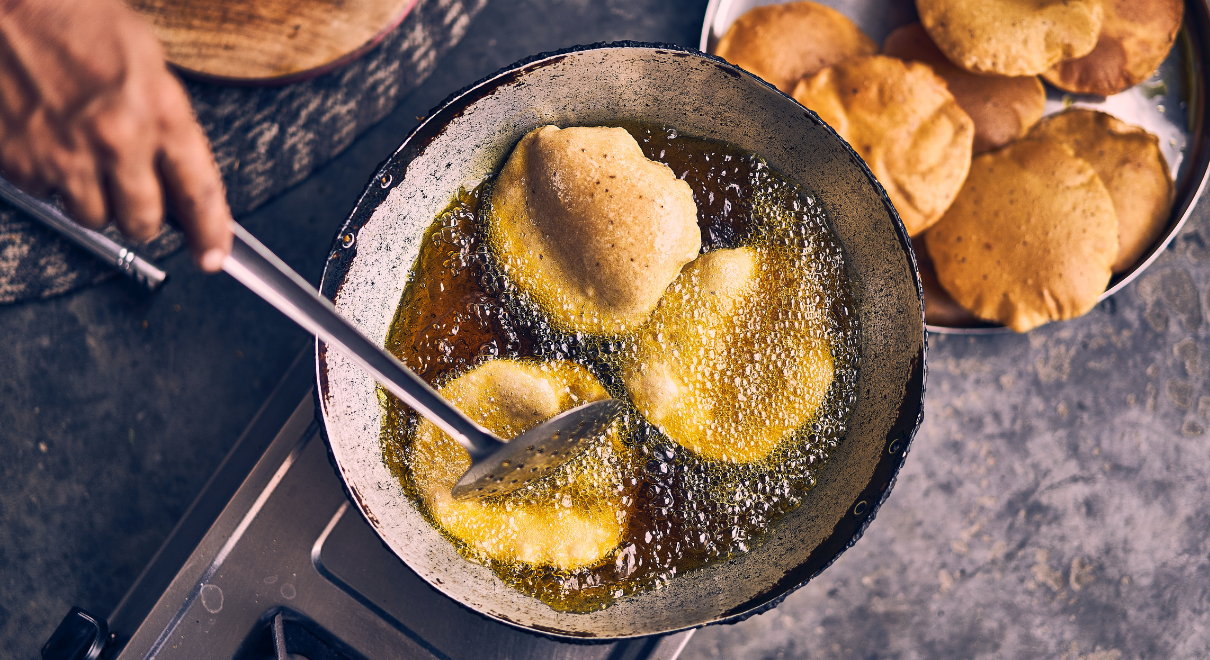Cooking With Hemp Seed Oil on High Temperature is Safe For Everyone
Understanding the Science of Oil Oxidation
To ensure safe and healthy cooking practices, it’s vital to comprehend the science of oil oxidation and how that impacts cooking with hemp seed oil. When oils are exposed to high temperatures during cooking, they undergo a chemical reaction known as oxidation.
This process occurs when the oil’s molecular structure interacts with oxygen, resulting in the formation of free radicals and the breakdown of the oil’s beneficial compounds. Oxidation not only alters the oil’s flavor and aroma but also leads to the production of harmful substances, such as trans fats and lipid peroxides, which can have adverse health effects when consumed regularly.
Different oils exhibit varying levels of resistance to oxidation, making it crucial to select the right oil for specific cooking methods. Hemp seed oil is known for its excellent stability and resistance to oxidation, even at high temperatures.
This is largely attributed to its composition, which includes a balanced ratio of omega-3 and omega-6 fatty acids and a high content of antioxidants, such as vitamin E. These attributes make hemp seed oil a safe and reliable choice for high-temperature cooking, as it maintains its nutritional value while minimizing the formation of harmful byproducts.
Understanding the science of oil oxidation empowers individuals to make informed choices in the kitchen, ensuring both the safety and the nutritional quality of their meals.
Why Hemp Seed Oil Stands Strong in High-Temperature Cooking
Hemp seed oil’s resilience in high-temperature cooking methods makes it a versatile and health-conscious choice for culinary enthusiasts. Whether you’re frying, sautéing, or roasting, hemp seed oil stands strong in the face of high temperatures.
Its high smoke point, typically around 330°F to 350°F (166°C to 177°C), allows it to maintain stability and retain its nutritional integrity even when subjected to heat. This makes hemp seed oil suitable for a wide range of cooking applications, including stir-frying, pan-searing, and deep-frying.
Its ability to withstand high heat without breaking down or producing harmful compounds ensures that the natural flavors and beneficial compounds in hemp seed oil are preserved, contributing to the overall quality and taste of your dishes.
One of the key advantages of using hemp seed oil in high-temperature cooking is its balanced fatty acid profile. It contains a healthy ratio of omega-3 to omega-6 fatty acids, which not only contributes to its stability but also offers potential health benefits.
Omega-3 fatty acids are known for their anti-inflammatory properties, while omega-6 fatty acids play essential roles in maintaining overall health. By cooking with hemp seed oil, individuals can introduce these beneficial fats into their diets while enjoying the flavors and textures that high-temperature cooking methods provide.
Safe Cooking Practices with Hemp Seed Oil
Safe cooking practices with hemp seed oil are essential to maximize its nutritional benefits and prevent potential hazards associated with high-temperature cooking. Hemp seed oil’s impressive stability and resistance to oxidation at elevated temperatures make it a reliable choice for various culinary applications, but there are guidelines to follow to ensure a safe and healthy cooking experience.
First and foremost, it’s crucial to use hemp seed oil in moderation and not exceed its smoke point, which is typically around 330°F to 350°F (166°C to 177°C). Overheating the oil can lead to undesirable changes in flavor and the formation of harmful byproducts.
Therefore, it’s advisable to use medium to high heat settings when cooking with hemp seed oil and to pay attention to temperature control. Additionally, hemp seed oil should not be reused for frying or deep-frying, as repeated heating can accelerate the oxidation process and compromise its quality.
To preserve its nutritional value and taste, it’s best to use hemp seed oil for single cooking sessions and discard any leftover oil. It’s also essential to store hemp seed oil properly in a cool, dark place, away from direct sunlight and heat sources, to prevent premature oxidation. Lastly, incorporating hemp seed oil into a balanced diet that includes a variety of cooking oils and fats ensures a diverse range of nutrients and culinary experiences.
By adhering to these safe cooking practices, individuals can harness the full potential of hemp seed oil’s health benefits while enjoying flavorful and nutritious meals.
Maintaining Nutritional Value: Benefits of Cooking with Hemp Seed Oil
Cooking with hemp seed oil offers a unique advantage in maintaining the nutritional value of meals, particularly when it comes to increasing the intake of essential omega-3 fatty acids. Omega-3s are renowned for their numerous health benefits, including supporting heart health, reducing inflammation, and promoting brain function. Hemp seed oil contains a significant amount of alpha-linolenic acid (ALA), a type of omega-3 fatty acid.
By incorporating hemp seed oil into everyday meals, individuals can effortlessly boost their omega-3 intake, contributing to better overall health. This is particularly advantageous for those who may not regularly consume other omega-3-rich foods like fatty fish or walnuts.
Moreover, hemp seed oil’s balanced fatty acid profile, featuring a favorable ratio of omega-3 to omega-6 fatty acids, is conducive to maintaining a healthy inflammatory response in the body. The typical Western diet often contains an excessive amount of omega-6 fatty acids, which can promote inflammation when not balanced with sufficient omega-3s.
Hemp seed oil’s omega-3 content helps offset this imbalance, potentially reducing the risk of chronic inflammatory conditions. Incorporating hemp seed oil into cooking not only enhances the nutritional content of meals but also promotes dietary diversity, offering individuals a practical way to prioritize their health and well-being through balanced nutrition.
Dispelling Myths: The Truth About Hemp Seed Oil and Heat
Dispelling misconceptions about cooking with hemp seed oil is essential to understanding its safe and versatile applications in the kitchen.
One common myth is that hemp seed oil cannot withstand high temperatures and should only be used for low-heat or cold dishes. In reality, hemp seed oil possesses a relatively high smoke point, typically around 330°F to 350°F (166°C to 177°C), making it well-suited for a variety of cooking methods, including sautéing, stir-frying, and roasting.
Its stable chemical composition, which includes a balanced ratio of omega-3 and omega-6 fatty acids, along with a high content of antioxidants like vitamin E, enables hemp seed oil to maintain its structural integrity and nutritional value when exposed to heat. By debunking this myth, individuals can confidently explore the many culinary possibilities that hemp seed oil offers, without fear of compromising its quality.
Another common misconception is that hemp seed oil imparts a strong, overpowering flavor to dishes. While hemp seed oil does have a distinct, nutty flavor, it is relatively mild and well-suited to both savory and sweet dishes. Its flavor profile complements a wide range of cuisines and ingredients, enhancing the overall taste without overpowering the dish.
By understanding that hemp seed oil can be used in moderation to add depth and complexity to recipes, individuals can dispel the myth that it dominates the palate. This knowledge empowers cooks to creatively incorporate hemp seed oil into their culinary repertoire, expanding their horizons and reaping the nutritional benefits of this versatile oil while enjoying a variety of flavors and dishes.
Let’s rethink food, together.


